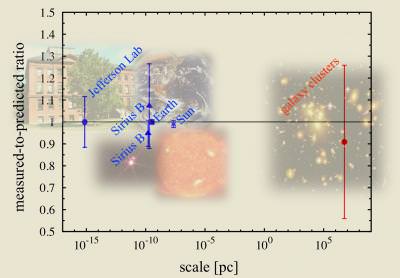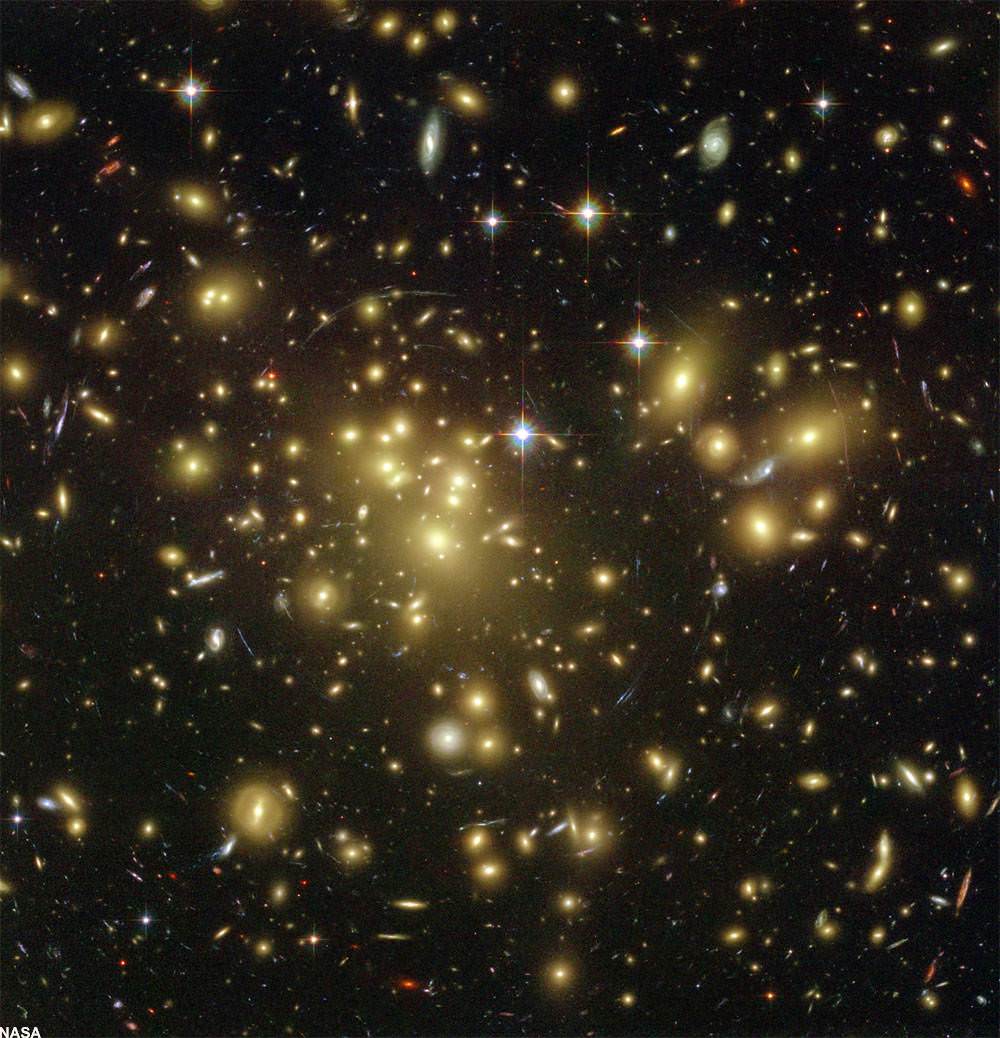[/caption]
Hey. We’re all aware of Einstein’s theories and how gravity affects light. We know it was proved during a total solar eclipse, but what we’ve never realized in observational astronomy is that light just might get bent by other gravitational influences. If it can happen from something as small as a star, then what might occur if you had a huge group of stars? Like a galaxy… Or a group of galaxies!
What’s new in the world of light? Astrophysicists at the Dark Cosmology Centre at the Niels Bohr Institute have now gone around the bend and came up with a method of measuring how outgoing light is affected by the gravity of galaxy clusters. Not only does each individual star and each individual galaxy possess its own gravity, but a galaxy group is held together by gravitational attraction as well. Sure, it stands to reason that gravity is affecting what we see – but there’s even more to it. Redshift…
“It is really wonderful. We live in an era with the technological ability to actually measure such phenomena as cosmological gravitational redshift”, says astrophysicist Radek Wojtak, Dark Cosmology Centre under the Niels Bohr Institute at the University of Copenhagen.
Together with team members Steen Hansen and Jens Hjorth, Wojtak has been collecting light data and measurements from 8,000 galaxy clusters. Their studies have included calculations from mid-placed members to calibrations on those that reside at the periphery.
“We could measure small differences in the redshift of the galaxies and see that the light from galaxies in the middle of a cluster had to ‘crawl’ out through the gravitational field, while it was easier for the light from the outlying galaxies to emerge”, explains Radek Wojtak.

The next step in the equation is to measure the entire galaxy cluster’s total mass to arrive at its gravitational potential. Then, using the general theory of relativity, the gravitational redshift could be determined by galaxy location.
“It turned out that the theoretical calculations of the gravitational redshift based on the general theory of relativity was in complete agreement with the astronomical observations.” explains Wojtak. “Our analysis of observations of galaxy clusters show that the redshift of the light is proportionally offset in relation to the gravitational influence from the galaxy cluster’s gravity. In that way our observations confirm the theory of relativity.”
Of course, this kind of revelation also has other implications… theoretical dark matter just might play a role in gravitational redshift, too. And don’t forget dark energy. All these hypothetical models need to be taken into account. But, for now, we’re looking at the big picture in a different way.
“Now the general theory of relativity has been tested on a cosmological scale and this confirms that the general theory of relativity works and that means that there is a strong indication for the presence of dark energy”, explains Radek Wojtak.
As Walt Whitman once said, “I open the scuttle at night and see the far-sprinkled systems, And all I see multiplied as high as I can cypher edge but the rim of the farther systems. Wider and wider they spread, expanding, always expanding,Outward and outward and forever outward.”
Original Story Source: EurekAlert News Release. Link to Gravitational redshift of galaxies in clusters as predicted by general relativity.


Picknicking here but second paragraph: “came” should be “come”. In the photo caption, “her” should be “here” and there should be a comma after “with the new research”. Otherwise, it is always mind boggling what is possible using our newest instruments. The era of information is surely here.
Shouldn’t that be ‘Pitnicking’? ~@; )
yes when correcting someone else’s errors, make sure you know the difference between picknicking and nitpicking (hopefully there willl be no nits at the picnic..)
It is always good when general relativity is constistently confirmed to hold.
LC
Tammy’s article here ‘dovetails’ well with and continues Jon Voisey’s 09.26.11 story concerning supernova as magnified by gravitational lensing. http://www.universetoday.com/89242/a-magnified-supernova/
Proving, there’s much to be learned and said on this topic! Good job you guys!
Goes to prove what they say: good stories attract.
But of course ftl neutrinos prove relativity is “all wrong”!?
Kidding, kidding! This is … what is the word … it so rarely useful … oh, I know: awesome!